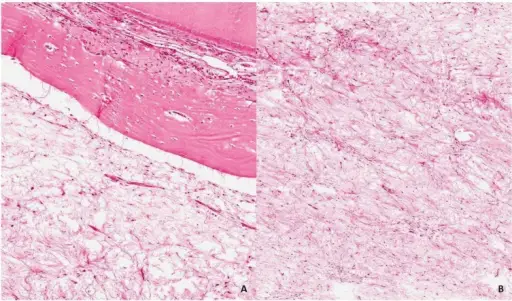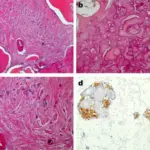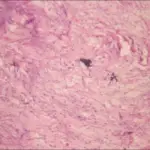Odontogenic myxoma is a rare intraosseous neoplasm, which is benign but locally aggressive. It rarely appears in any bone other than the jaws. It is considered to be derived from the mesenchymal portion of the tooth germ.
What is the Pathology of Odontogenic Myxoma?
The pathology of odontogenic myxoma is:
-Etiology: The cause of odontogenic myxoma is unknown.
-Genes involved: None.
-Pathogenesis: The sequence of events that lead to odontogenic myxoma is the embryonic dental anlage of mesenchymal tissue.
-Histology: The histology associated with odontogenic myxoma shows spindled to stellate cells with eosinophilic cytoplasm set in a myxoid matrix.
How does Odontogenic Myxoma Present?
Patients with odontogenic myxoma are typically females. The symptoms, features, and clinical findings associated with odontogenic myxoma include a painless, slowly enlarging expansion of the jaw with possible tooth loosening or displacement.
How is Odontogenic Myxoma Diagnosed?
Odontogenic myxoma is diagnosed depending on clinical, radiologic, and pathologic correlation.
How is Odontogenic Myxoma Treated?
Odontogenic myxoma is treated by surgery.
What is the Prognosis of Odontogenic Myxoma?
The prognosis of odontogenic myxoma is fair with a ~25% recurrence rate.



